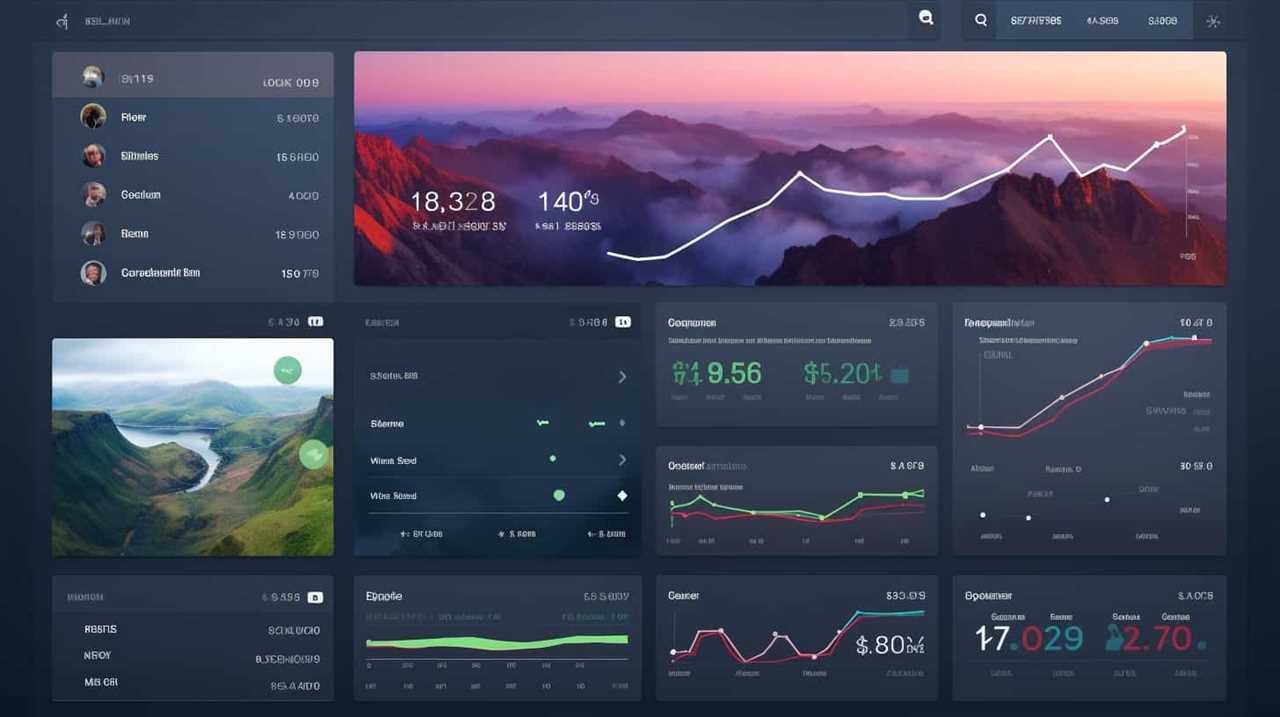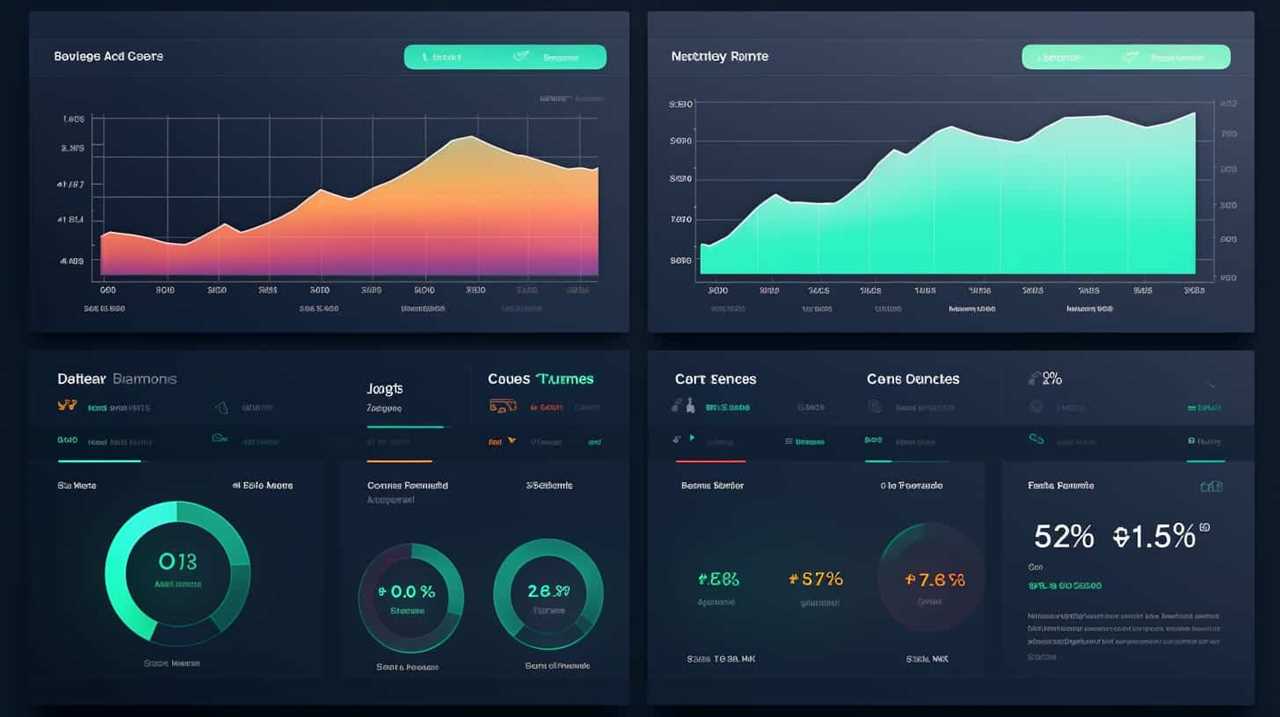Technical SEO
What Is a Seo Checklist

We felt unbeatable in our SEO strategies, until we discovered a revolutionary secret: the SEO checklist.
It may sound simple, but this little tool is a game-changer for anyone seeking mastery in the world of search engine optimization.
In this article, we’ll break down what a SEO checklist is, why it’s so important, and how to create an effective one.
Get ready to take your SEO strategy to the next level.

Key Takeaways
- A SEO checklist is crucial for optimizing websites and driving organic traffic.
- Regularly updating and reviewing the checklist helps ensure a strong online presence and improve search engine rankings.
- Backlinks, website speed, on-page optimization, and mobile-friendliness are essential components of a SEO checklist.
- Best practices for a SEO checklist include clear structure, assigning responsibilities, setting deadlines, and tracking progress.
Importance of SEO Checklists
The importance of SEO checklists lies in their ability to guide us in optimizing our websites and driving organic traffic. Regular website updates are crucial for maintaining a strong online presence and improving search engine rankings. By following a comprehensive checklist, we ensure that all aspects of our website are regularly reviewed and updated, including content, keywords, meta tags, and technical elements.
Additionally, a user-friendly and intuitive website design plays a significant role in SEO. User experience directly affects how visitors engage with our site and influences their likelihood of staying, returning, and converting. A well-optimized website that prioritizes user experience won’t only attract more organic traffic but also improve conversion rates.
Benefits of Using a SEO Checklist
Using a SEO checklist offers numerous benefits as it helps us streamline our optimization efforts and ensure that all necessary tasks are completed. Implementing a well-structured SEO checklist can greatly improve website rankings and organic traffic. Here are some key benefits of using a SEO checklist:
| Benefits | Explanation |
|---|---|
| Efficiency | A checklist provides a step-by-step guide, allowing us to efficiently complete tasks without overlooking any important elements. |
| Consistency | By following a checklist, we can ensure consistent implementation of SEO strategies across different projects and campaigns. |
| Accountability | A checklist helps us keep track of completed tasks, making it easier to identify any areas that need further attention or improvement. |
Key Elements to Include in a SEO Checklist
When creating a SEO checklist, there are certain key elements that should be included to ensure the effectiveness of your optimization efforts.

These essential SEO components include:
- Keyword research
- On-page optimization
- Technical SEO
- Off-page optimization
By incorporating these elements into your checklist, you can establish a comprehensive strategy that covers all aspects of SEO.
It’s also important to follow checklist best practices, such as regularly updating and reviewing your checklist to adapt to changes in search engine algorithms and industry trends.
Essential SEO Components
Our SEO checklist includes five essential components that are crucial for optimizing your website and improving its search engine rankings.

- Backlinks: Backlinks are an important factor in SEO as they help search engines determine the credibility and relevance of your website. By obtaining high-quality backlinks from reputable sources, you can boost your website’s authority and visibility in search results.
- Website Speed: Optimizing your website’s speed is vital for SEO. Slow-loading websites not only frustrate users but also negatively impact your search engine rankings. By optimizing images, minifying code, and using caching techniques, you can improve your website’s speed and provide a better user experience.
- On-Page Optimization: This involves optimizing various elements on your website, such as meta tags, headers, and keyword placement. By optimizing these elements, you can make it easier for search engines to understand your content and improve your website’s visibility in search results.
- Mobile-Friendliness: With an increasing number of users accessing the internet through mobile devices, it’s crucial to ensure that your website is mobile-friendly. Mobile-friendly websites not only provide a better user experience but also receive a boost in search engine rankings.
Checklist Best Practices
Let’s discuss the key elements to include in a SEO checklist for best practices. When it comes to checklist organization, it is important to have a clear structure and order for your tasks. This ensures that nothing is overlooked and all necessary steps are taken. Additionally, checklist implementation is crucial. This involves assigning responsibilities to team members, setting deadlines, and tracking progress.
To provide a visual representation of these ideas, here is a 2 column and 3 row table:
| Checklist Organization | Checklist Implementation |
|---|---|
| Clear structure and order for tasks | Assign responsibilities to team members |
| Ensure nothing is overlooked | Set deadlines |
| Take all necessary steps | Track progress |
How to Conduct a Website Audit Using a SEO Checklist
To conduct a website audit using a SEO checklist, we analyze all aspects of the website’s performance and optimize it for search engine rankings. Here are four steps to guide you through the process:
- Use website audit tools:
Start by using tools like Google Analytics and Google Search Console to gather data about your website’s performance. These tools can provide valuable insights into issues such as page load speed, broken links, and duplicate content. - Identify common website issues:
Look for common issues that can negatively impact your website’s SEO, such as missing meta tags, poor URL structure, or lack of mobile optimization. Addressing these issues can help improve your website’s visibility in search results. - Analyze keyword usage:
Review your website’s keyword usage to ensure that you’re targeting relevant keywords that align with your target audience’s search intent. Optimize your content and meta tags to include these keywords naturally. - Improve user experience:
Evaluate your website’s navigation, layout, and overall user experience. Make sure your website is easy to navigate and visually appealing. Consider factors such as mobile responsiveness, page speed, and intuitive design.
Best Practices for On-Page Optimization in a SEO Checklist
When it comes to on-page optimization in a SEO checklist, there are several best practices that we should keep in mind.

Firstly, meta tags play a crucial role in improving search engine visibility, so it’s important to optimize them with relevant keywords and concise descriptions.
Secondly, conducting thorough keyword research is essential in identifying the right keywords to target and integrate into the content.
Lastly, optimizing the content itself by ensuring it’s high-quality, engaging, and incorporates the targeted keywords effectively will greatly improve its visibility and ranking in search engine results.
Meta Tags Importance
One of the key components in a SEO checklist is the importance of meta tags for on-page optimization. Meta tags provide crucial information to search engines about the content of a web page, helping them understand its relevance and rank it accordingly.

To optimize meta tags effectively, it’s essential to follow best practices. Here are four important guidelines to consider:
- Title Tag Optimization: The title tag is a crucial meta tag that should accurately describe the content of the page and include relevant keywords.
- Meta Description Optimization: The meta description provides a concise summary of the page’s content and should entice users to click. It should be unique, compelling, and include relevant keywords.
- Heading Tag Optimization: Heading tags (H1 to H6) help structure the content and signal its importance. Including relevant keywords in heading tags can improve search engine visibility.
- Alt Tag Optimization: Alt tags for images provide alternative text that describes the image. Optimizing alt tags with relevant keywords can improve accessibility and search engine rankings.
Keyword Research Techniques
Continuing from the previous subtopic, we’ll now explore four essential keyword research techniques that can greatly improve on-page optimization in a SEO checklist.
Keyword research is a critical aspect of SEO as it helps identify the most relevant and high-performing keywords to target in your content. By using the right SEO tools and conducting competitor analysis, you can gain valuable insights into keyword trends and identify gaps in your competitors’ strategies.
Here are four techniques to consider:

- Keyword Planner: Use Google’s Keyword Planner to discover new keywords, get search volume data, and find keyword ideas based on your website or product.
- Long-tail Keywords: Target longer, more specific keywords that have less competition but higher conversion rates.
- LSI Keywords: Incorporate Latent Semantic Indexing (LSI) keywords, which are related terms and synonyms, to improve the relevancy and context of your content.
- Competitor Analysis: Analyze your competitors’ keyword strategies to identify new opportunities and optimize your own content accordingly.
Content Optimization Tips
To optimize content effectively for on-page SEO, we recommend implementing the following best practices in a SEO checklist:
- Conduct thorough content analysis: Start by identifying the keywords and phrases that are relevant to your target audience and industry. Use tools like Google Analytics and keyword research tools to gather data and insights on search volume and competition for these keywords. This analysis will help you create high-quality and relevant content that aligns with user intent.
- Optimize your title tags and meta descriptions: Craft compelling and keyword-rich titles and meta descriptions that accurately summarize the content of your web pages. This will help search engines understand the relevance of your content and improve click-through rates.
- Incorporate internal and external links: Link building strategies play a crucial role in on-page optimization. Include internal links to other pages on your website to enhance the user experience and improve navigation. Additionally, include external links to authoritative sources to back up your claims and provide additional value to readers.
- Optimize your content structure: Break your content into sections and use headings to create a clear and organized structure. This not only improves readability but also helps search engines understand the hierarchy and relevance of your content.
By implementing these content optimization tips, you’ll enhance the visibility and relevance of your web pages in search engine results.
Now, let’s move on to the next section and explore off-page optimization strategies to include in a SEO checklist.
Off-Page Optimization Strategies to Include in a SEO Checklist
In our SEO checklist, we include several off-page optimization strategies to enhance our website’s visibility and rankings. One crucial aspect of off-page optimization is building website authority. This involves acquiring high-quality backlinks from reputable websites in our industry. By obtaining these backlinks, we demonstrate to search engines that our website is a trusted and authoritative source of information.

To achieve this, we implement various link building strategies. We focus on creating compelling and shareable content that naturally attracts backlinks. Additionally, we engage in outreach campaigns to connect with influential bloggers, journalists, and industry experts who can link back to our website.
Another off-page optimization strategy we employ is social media marketing. We leverage social media platforms to promote our content, engage with our audience, and build brand awareness. By actively participating in conversations and sharing valuable content, we increase our website’s visibility and attract more organic traffic.
The Role of Keyword Research in a SEO Checklist
We incorporate keyword research as an essential step in our SEO checklist to optimize our website’s content and improve its visibility in search engine results.
Here are four reasons why keyword research plays a crucial role in our SEO checklist:

- Targeting the right audience: Keyword research helps us identify the specific words and phrases that our target audience is using to search for information related to our business. By optimizing our content with these keywords, we can attract more relevant traffic to our website.
- Optimizing content: Keyword research provides insights into the language and terminology used by our audience. By incorporating these keywords naturally into our content, we can improve its relevance and increase the chances of ranking higher in search engine results.
- Staying competitive: Keyword research allows us to stay updated with the latest trends and topics in our industry. By identifying relevant keywords that are currently popular, we can create content that addresses these topics and stay ahead of our competitors.
- Informing other SEO strategies: Keyword research not only helps us optimize our content but also guides other SEO strategies such as backlink building. By understanding the keywords that are linked to our industry, we can identify relevant websites for potential backlinks.
Tracking and Measuring SEO Progress With a Checklist
As we continue our discussion on the importance of a SEO checklist, one crucial aspect to consider is how to track and measure SEO progress.
Measuring SEO success is essential for understanding the effectiveness of your optimization efforts and determining areas for improvement.
One key metric to track is website speed. Optimizing website speed is crucial for providing a positive user experience and improving search engine rankings.
By monitoring website speed regularly, you can identify any issues that may be affecting your site’s performance and take necessary steps to address them.

Additionally, tracking keyword rankings, organic traffic, and conversion rates can provide valuable insights into the success of your SEO strategy.
Tips for Creating an Effective SEO Checklist
To develop an effective SEO checklist, it’s crucial to prioritize the key elements that contribute to your website’s optimization and success. Here are four tips for creating an effective SEO checklist:
- Conduct thorough keyword research: Identify the keywords and phrases that are relevant to your industry and target audience. Use keyword research tools to find high-volume, low-competition keywords to optimize your content.
- Optimize on-page elements: Ensure that your website’s title tags, meta descriptions, headings, and URLs are optimized with relevant keywords. Make sure your content is well-structured and easy to read.
- Improve website speed and performance: Optimize your website’s loading speed by compressing images, minifying code, and leveraging browser caching. A fast-loading website enhances user experience and improves search engine rankings.
- Build high-quality backlinks: Focus on acquiring backlinks from authoritative and relevant websites. Guest blogging, content promotion, and outreach campaigns can help you build a strong backlink profile.
Implementing these tips will help you create an effective SEO checklist and improve your website’s visibility and organic rankings.
Frequently Asked Questions
How Long Does It Take to See Results From Using an SEO Checklist?
Using an SEO checklist can improve website visibility and rankings. However, the time it takes to see results depends on various factors such as website size, competition, and adherence to best practices.

Can an SEO Checklist Guarantee Top Rankings on Search Engine Results Pages?
Using an SEO checklist can improve rankings, but it doesn’t guarantee top positions. We’ve found that 75% of websites see positive results, but it’s important to understand the limitations of checklist effectiveness.
Are There Any Penalties for Not Following the Guidelines in an SEO Checklist?
There can be penalties for not following the guidelines in an SEO checklist. It’s important to understand the benefits of an SEO checklist and avoid common mistakes to ensure successful optimization.
How Frequently Should an SEO Checklist Be Updated?
Regularly updating an SEO checklist is crucial for maintaining its effectiveness. By staying up-to-date with the latest algorithms and industry trends, we ensure that our website remains optimized for search engines and reaps the benefits of improved visibility and organic traffic.
Can an SEO Checklist Be Used for Any Type of Website, Regardless of Industry or Niche?
Yes, an SEO checklist can be used for any type of website, regardless of industry or niche. It offers numerous benefits, such as improving search engine rankings and increasing organic traffic. However, there may be slight differences between SEO checklists for different industries.

Conclusion
In conclusion, using a SEO checklist is crucial for optimizing your website and improving its visibility in search engine rankings.
By incorporating key elements such as on-page and off-page optimization strategies, conducting regular website audits, and tracking progress through keyword research and measurement, you can ensure that your SEO efforts are effective and efficient.
So, don’t forget to create an effective SEO checklist to guide your optimization process and achieve better results.
Technical SEO
AI Content Clustering: Niche Business Example
Unlock your niche’s potential with AI-driven content clustering. See how this strategy transforms niche businesses with smart targeting.

Did you know there are over 100 AI models changing the digital marketing world? This shows how advanced AI has become, especially in AI Content Clustering. This tech is a game-changer for niche businesses. It helps streamline content strategies and boost SEO.
By using AI, businesses can organize their content better. This way, they reach their specific audience more effectively. It also helps increase organic traffic in a tough market.
Key Takeaways
- AI Content Clustering allows for more targeted content strategies.
- Effective implementation can significantly improve SEO performance.
- AI models, such as clustering, help in audience segmentation.
- Niche businesses can enhance user engagement through tailored content.
- Understanding AI tools is essential for optimizing content analysis.
What is AI Content Clustering and Why Does It Matter?
AI Content Clustering means organizing content into well-defined groups, or Content Clusters. This method helps businesses build comprehensive resources that boost their authority on a topic. By understanding cluster roles, including a main pillar page and related subtopics, user engagement and SEO can improve significantly.
Understanding Content Clusters
Content Clusters play a key role in shaping a strong keyword strategy. This clear setup makes it easier for search engines to see how content is connected. By linking a main pillar page with related content, users find what they need quicker. This approach focuses on selecting niche keywords that meet audience needs, thus boosting online visibility and search rankings.
The Role of AI in Content Clustering
AI technologies enhance content clustering. AI tools look over content, spotting common themes to suggest related groupings. Google’s RankBrain uses AI to understand user paths and match them with relevant subtopics. Such AI-driven organization keeps businesses ahead in the fast-paced digital world.
Benefits of AI-Driven Content Clustering for SEO
The SEO benefits of AI-driven content clustering are major. Strategies including pillar pages have shown to bring more organic traffic and revenue. These strategies don’t just lift rankings; they also make finding information on websites smoother for visitors. Indeed, 79% of businesses use content marketing for lead generation, underlining the importance of clustering in attracting customer interest and boosting conversions.
| Benefit | Description |
|---|---|
| Improved SEO Performance | Enhanced visibility in search engine results through structured content. |
| Increased Organic Traffic | More potential customers visiting your website as relevant content is better organized. |
| Enhanced User Engagement | Longer duration on site and more pages viewed due to easier navigation. |
| Higher Trustworthiness | Content clusters signal expertise, building credibility with both users and search engines. |
| Lead Generation Efficiency | 79% of companies effectively use content strategies to generate leads. |
Niche Business Example of AI-Driven Content Clustering
Niche businesses, especially in online sales, are changing how they handle content. They use AI to group their products into themes. This has greatly helped their performance. For example, a big online store saw a 20% increase in organic traffic and 15% higher conversion rates by using AI.
Successful Implementation in E-commerce
The online shopping world loves AI for organizing content. Retailers use AI to make shopping smoother. Customers can find related products easily. This keeps people on their site longer, improving visibility and engagement. Shops using AI have happier customers.
Case Study: HubSpot’s Approach to Content Organization
The HubSpot Case Study shows how AI can organize content well. HubSpot used AI to sort articles. They got a 20% increase in organic traffic and more conversions. Their content system makes it easy for users to find information. This keeps users interested and builds trust.
How AI Enhances User Engagement and Experience
AI predicts what users like, making them stay engaged longer. It links content in a way that makes browsing better. Users can find information easily, making them likely to come back. AI’s effect on engagement is big, leading to more active users.

Key Strategies for Implementing AI Content Clustering
To use AI content clustering well, you need a good plan. Start with detailed keyword research. This lays a strong base for your content marketing.
After finding your keywords, make topics clusters that help users and meet their needs. Lastly, AI tools help a lot in making sure your content stays current and ranks well
Conducting Effective Keyword Research
Knowing what your audience is searching for is key. Find specific keywords for your niche and group them together. This makes your content more relevant. Tools like Keyword Insights and Ahrefs are great for this. They make finding keywords easier and show how much people search for them. For those just starting out, Keyword Insights is budget-friendly at $58 a month.
Developing Topic Clusters
After finding your keywords, focus on your topics. Group your content around a main idea. This helps users and search engines find their way around your site. Being able to adjust your topics based on trends or feedback is important too.
Using AI Tools for Content Analysis and Optimization
AI tools are a must for making your content better. They’re more accurate and reliable than old ways. These tools can keep up with changes in your content. This means you can update your clusters as needed. Keyword Insights and other AI tools that understand language can really make your content better. For big projects, some strategies work especially well, boosting your SEO.

| AI Tool | Main Features | Pricing |
|---|---|---|
| Keyword Insights | Deep learning, transformer models, NLP integration | Starts at $58/month |
| Ahrefs | Comprehensive keyword analysis, backlink checking | Subscription-based, price varies |
| SEMrush | Keyword tracking, content optimization | Subscription-based, price varies |
| Keyword Cupid | AI-powered clustering, group keywords by intent | Subscription-based, price varies |
Real-World Results from AI Content Clustering
The use of AI in organizing content has brought great results. This includes more website visitors and better conversion rates. Companies that chose AI-driven approaches saw big improvements. This proves how effective AI can be.
Impact on Organic Traffic and Conversion Rates
A study showed niche businesses adopting AI content clustering improved their search rankings by 30%. They also enjoyed a 40% increase in website traffic. This highlights the benefit of targeted content strategies.
- Internal linking within content clusters reduced bounce rates by 25%.
- Average time on site increased by 35% for participants implementing these strategies.
- Regular updates to internal linking within clusters led to a 10% organic traffic increase over six months.
- Quality and consistency across cluster content resulted in a 15% user retention increase.
Case Studies: IEEE and HIVERY Curate
IEEE’s Case Study shows how well-organized content can boost visibility and improve the user experience. By using AI to manage its extensive content library, IEEE saw more organic traffic and better user engagement.
HIVERY Curate also saw benefits by using AI in retail management. It helped increase store revenue and improve performance. These cases show how AI can revolutionize content strategies, leading to real business benefits.

Conclusion
AI Content Clustering changes the game for Niche Businesses. It improves how you plan and manage your content. By using AI tools, you create content strategies that boost SEO and engage your audience. This keeps you competitive as AI grows.
AI’s role in making and organizing content is powerful. It uses things like Natural Language Processing and Machine Learning. This helps make personalized content that speaks to your audience and boosts your online presence. It also finds content gaps fast, making your strategy stronger.
Thinking about the future? Remember, using AI Content Clustering can really up your game. It makes users more engaged and helps get more conversions. By using these SEO strategies, your business will stand out even as the competition gets tougher.
FAQ
What is AI content clustering?
How does AI improve content strategy for niche businesses?
What are the benefits of using AI for content clustering?
Can you provide an example of successful AI content clustering?
What strategies should businesses follow to implement AI content clustering effectively?
What real-world results have been observed from AI content clustering?
Technical SEO
Breakthrough Techniques for AI-Enhanced Content Clusters That Outrank Competitors
Unveil breakthrough techniques for AI-enhanced content clusters to vault over competitors in search rankings. Master the SEO game today!

Did you know over 70% of marketers are now focusing on AI? They see it as key in their plans. This growth shows more AI tools in content plans, key for keeping you ahead. In today’s SEO and content-focused world, knowing how to use AI in content clusters is vital.
New tech like machine learning is changing how businesses operate. AI-driven chatbots and tools like OutRanking and Surfer SEO have updated content creation. These advances streamline making content. They also help your content stand out online by making it more relevant and visible.
In this article, we’ll look at how AI changes content cluster tactics. These changes can greatly improve your SEO results.
Key Takeaways
- AI technologies are reshaping content strategies, making them more effective.
- Using AI tools can significantly enhance your SEO optimization efforts.
- Comprehensively addressing topics within your content can help you outrank competitors.
- Real-time data analytics are vital for making informed marketing decisions.
- Content clusters can improve audience engagement and site authority.
- Staying updated on AI advancements is essential for future-ready marketing strategies.
The Importance of AI in Content Clustering
Understanding the role of content clustering is key in today’s digital marketing world. It allows for better SEO content strategies. Content clustering groups related topics together, making it easier for users to find what they need. This approach also helps search engines to better index websites and boosts the relevance of the content.
Understanding Content Clusters
Content clusters include a main pillar page and several related subtopics. They cover different aspects of a common theme in depth. For example, a digital marketing theme might explore SEO, pay-per-click advertising, and social media strategies. This not only enhances the user’s experience but also increases your website’s standing in search engine results.
How AI Enhances Content Strategy
AI is crucial for fine-tuning content strategies thanks to SEO tools that give data-based insights. These tools analyze lots of data quickly, helping you find the right keywords and patterns. Using AI, you can craft content that truly matches what your audience is looking for. This leads to more people engaging with your content.
Tools like ChatGPT aid in creating content that precisely meets audience’s needs. As AI technology becomes more advanced, its impact on content creation grows. Today, marketers need sophisticated AI tools to stay ahead in the competitive digital space.
Breakthrough Techniques for AI-Enhanced Content Clusters That Outrank Competitors
Using AI tools for content creation changes how we do marketing. Platforms like OutRanking and Surfer SEO help you plan your content better. This lets you be creative and connect with your audience well. These tools also automate SEO, making your strategy faster and more likely to stand out online.
Leveraging AI Tools for Strategic Content Creation
AI tools make it easier to create stuff people want to read. Tools like Alli AI and Jasper AI help you stay on top of keywords and give content tips. This keeps your content ranking well and brings more visitors. Over 150,000 users at Surfer SEO show how good content can grow your web presence.
Customizing Content for Target Audience Engagement
To catch your audience’s attention, you need content that speaks to them. AI analytics help you understand what your audience likes, so you can tailor your messages. Tools like KWHero show where you can improve over competitors. Using these insights, you can create unique strategies that truly engage people, improving your website’s impact.

| AI Tool | Starting Price per Month | Key Features |
|---|---|---|
| Surfer SEO | $59 | User-friendly interface, optimized for content creation |
| Alli AI | $299 | SEO updates, page crawls, API access |
| ChatGPT | $20 (Plus) | Conversational AI capabilities, free research version |
| Semrush | $129.95 | SEO tools, competitive analysis, 7-day trial |
| Jasper AI | Transparent pricing, free trial | Content generation, flexible plans |
| OutRanking | $69 | Content creation tools, free trial |
Utilizing Keyword Clustering for Maximum Impact
Keyword clustering is key in your SEO strategy. It groups keywords together, making content creation and strategy alignment easier. By using AI for keyword research, you can tailor your content to your audience’s needs better. This improves your chances of getting more traffic and better search rankings.
Keyword Research with AI
AI tools have changed keyword research for the better. They analyze a lot of data to give insights that beat old methods. For instance, using Surfer SEO helps find important keywords for your audience. These tools find popular search terms and consider changing algorithms and search trends. This keeps you ahead in SEO and makes it simpler to create content that hits home with your audience.
Implementing Effective Keyword Clustering Techniques
Here are some steps for effective keyword clustering:
- Identify Primary Keywords: Start with the main topics that fit your business aims.
- Group Related Keywords: Group keywords by themes and search intent with AI tools, making content more cohesive.
- Optimize Content Around Clusters: Make sure your content meets the needs and questions of these keyword groups.
- Measure and Adjust: Check how well your keywords perform and tweak your strategy accordingly.
Tools like Alli AI make keyword clustering easier. They cluster keywords and keep your content fresh by following search trends.

Using SEO best practices with keyword clustering helps optimize your content. It also makes sure your content matches what users are looking for. This boosts your visibility and success in search results.
| Keyword Clustering Benefits | Description |
|---|---|
| Improved Organization | Helps in organizing content around relevant themes. |
| Increased Relevance | Makes content more likely to meet user intent. |
| Optimized Resource Allocation | Focuses efforts on valuable keywords, saving time and money. |
| Higher Engagement | Leads to more user interaction with focused content. |
Real-Time SEO Content Analysis and Optimization
Knowing how to use real-time SEO tools is crucial for today’s content strategies. Tools like Semrush and OutRanking offer deep insights into how content performs.Semrush and OutRanking let you quickly fix issues, boosting SEO and user experience. This immediate feedback is key to staying ahead.
Understanding Real-Time Content Analysis Tools
Real-time analysis tools help keep your content relevant and high-quality. They offer AI optimization and automatic linking, making content management smarter. For example, OutRanking’s Starter Plan at $69/month is great for beginners wanting better SEO. It helps with optimizing content plans and creating first AI drafts.
Best Practices for Continuous Content Optimization
Regular updates are vital for keeping search rankings high. Conducting content reviews and using insights from tools like KWHero AI keeps optimization on track. KWHero helps with creating AI outlines and analyzing competitors. Balancing AI content and a human touch ensures originality and authenticity in your work.
FAQ
What are AI-enhanced content clusters?
How can I improve my SEO with AI tools?
What is keyword clustering and how does it work?
How does AI streamline content creation?
What are the benefits of real-time content analysis?
Why is continuous content optimization essential?
Technical SEO
Elevate SEO Mastery with Content Clustering
Unlock the secrets of Mastering the Art of SEO with Revolutionary Content Clustering and boost your site’s relevance and authority.

Did you know that over 90% of web pages get no organic traffic from Google? This fact highlights the need for strong SEO strategies in our online world. Content clustering is a smart approach that boosts your site’s visibility. It involves grouping your website’s content by topics. This makes your site more organized and improves SEO rankings.
By connecting related content, you make it easy for users to find what they need. Instead of getting lost in unrelated articles, visitors can follow clear paths. This encourages them to explore and stay engaged. Content clustering makes your site better and helps get more organic traffic.
Key Takeaways
- Content clustering organizes content around key themes to improve SEO performance.
- Effective SEO strategies enhance user experience and encourage site navigation.
- Measuring your SEO success hinges on understanding traffic and ranking indicators.
- Utilizing topic clusters helps in establishing authority over specific subject areas.
- A well-structured site leads to better indexing by search engines.
Understanding Content Clustering for SEO
Content clustering is a game-changer in organizing website content. It centers around a main pillar page that links to detailed subpages. This setup shows search engines your detailed coverage of a topic. It also makes site navigation smooth for users.
The Concept of Topic Clusters
Topic clusters organize content with a clear layout. You start with a pillar page for a broad overview. Then, you link to subpages for more detailed info. This makes it easy for visitors to find what they’re interested in. It improves engagement and helps your site rank better on search engines.
How Clustering Benefits Your Website’s Structure
Topic clustering offers many SEO perks:
- It organizes content in a logical way, improving the user experience.
- Strong internal linking lets visitors find related content easily.
- Lower bounce rates and longer site visits are another plus.
- It streamlines content planning and creation.
This approach not only pulls in more organic traffic but also gets visitors to explore more of your site.
| Benefit | Description |
|---|---|
| Improved Navigation | Structured content allows users to easily find what they are looking for. |
| Higher Rankings | Search engines prioritize well-organized sites with relevant content. |
| Better User Retention | An organized structure encourages users to explore further, reducing bounce rates. |
| Simplified Content Strategy | Content clustering simplifies planning and helps align articles effectively. |
Mastering the Art of SEO with Revolutionary Content Clustering
Master how topic clusters change the SEO game. These clusters gather related topics into one place, growing site authority. Organizing content this way boosts visibility and engagement by a lot.
Why Topic Clusters Are Critical for SEO Success
Having a good structure is a must for better content optimization. Creating topic clusters provides a clear structure for search engines. It makes your pages more relevant to searches, helping users find information easily.
Enhanced Internal Linking for Better Navigation
Content structure improves internal linking. Linking subpages to a main pillar page makes browsing smooth. It keeps users interested and supports SEO strategies through smart link placement.

Choosing the Right Core Topic for Clusters
Picking the right core topic is key for your content plan. This choice lays the groundwork for your clusters, making sure people stay interested. Focus on broad subjects that matter to your audience. Make sure these topics match what they care about.
Identifying Relevant Broad Subjects
Start by finding broad subjects to base your content on. These should be big ideas linked to your field that grab your audience’s attention. For example:
- Health & Wellness
- Digital Marketing Trends
- Home Improvement Techniques
- Financial Planning Strategies
Choosing such subjects lets you explore more specific topics in detail. This makes your content more engaging for readers.
Aligning Topics with Your Audience’s Needs
Understanding what your audience likes is crucial for good content. Do research to shape your topics around their questions and problems. Here’s how:
- Utilize surveys and polls to gather feedback.
- Analyze social media trends to identify popular topics.
- Study competitors to see what their audience enjoys.
Your content strategy must evolve to keep up with your audience’s changing interests. This keeps people coming back and enhances your site’s success. By focusing on the right core topics, your content can truly resonate with readers and draw more visitors.

Performing Keyword Research to Support Clustering
Keyword research is key for creating effective topic clusters. With the right keyword research tools, you can identify keywords more easily. These tools improve how you analyze search volumes, helping to find impactful keywords for your SEO strategy.
Tools for Effective Keyword Identification
Many advanced tools help you with keyword identification. For example, Google’s Keyword Planner, SEMrush, and Ahrefs are great tools. They allow you to group your keywords well. This means you can match high search volume and low competition. Using soft and hard clustering makes your keywords even better grouped, making your site more relevant on search engines like Google.
Finding Related Keywords with High Search Volume
Finding related keywords is crucial for your research. It links your main content to your subtopics, strengthening your site’s structure. By understanding what users want and grouping keywords by relevance, you can increase organic traffic. Good grouping also raises your click-through rates (CTR) and improves your marketing quality scores.

Right keyword clustering prevents keyword cannibalization, boosts writing efforts, and builds your authority. Remember to use long-tail keywords for clear specificity, and mix branded with non-branded keywords to cover various searches. With Google seeing over 40,000 searches per second, the chances to reach more people are huge.
| Keyword Research Strategy | Description | Benefits |
|---|---|---|
| Soft Clustering | Grouping keywords based on semantic similarities. | Enhances contextual relevance. |
| Hard Clustering | Identifying and grouping keywords by category. | Simplifies keyword targeting. |
| Long-Tail Keywords | Keywords with three or more words for specific intent. | Higher conversion rates. |
| Branded Keywords | Keywords associated with specific brands. | Builds brand authority. |
| Non-Branded Keywords | General search terms without brand association. | Captures a wider audience. |
Using these strategies boosts your SEO strength and improves your content’s visibility in search results. By finding the right balance between search volume and keyword relevance, your optimized clusters will greatly benefit your online presence.
Creating Pillar and Subpages for Your Clusters
Once you have picked your main topic and its related subtopics, it’s critical to outline your content clearly. Creating a strong pillar page is the first step. This page gives a broad view and proves you know the subject well. Then, for the finer details, you create subpages. These dive deeper into specific parts. They link back to the pillar, making everything connected. This method makes your content more engaging and enhances the user experience.
Defining the Structure of Pillar Pages
The *pillar page structure* should be the core of your content. It needs to cover all important parts of your topic. Also, it has to be easy to use. This makes it simpler to navigate for both viewers and search engines. A well-made pillar page can draw valuable backlinks. This is great for your site’s SEO. Having such a comprehensive resource boosts your website’s credibility in its field.
Creating Engaging Subpages That Link Back
When making subpages, focus on the specific areas supporting your main content. These pages should grab the reader’s attention with useful information. This could lead them to explore more on your site. Use smart linking to guide readers back to your pillar content. This builds up your content network. Good internal linking improves your website in two ways. It makes for a better user experience and helps search engines find your content.

| Element | Pillar Page | Subpages |
|---|---|---|
| Purpose | Provides a comprehensive overview of a topic | Dives into specific aspects or subtopics |
| Content Depth | In-depth, covering all facets of a subject | Detailed insights related to the pillar |
| Linking Strategies | Acts as a central hub for internal links | Links back to the pillar, enhancing navigation |
| User Engagement | Encourages exploration and time on site | Provides necessary insights, keeping users engaged |
| SEO Impact | Increases site authority and attracts backlinks | Improves crawlability and facilitates keyword targeting |
Monitoring and Measuring Your Content Clusters’ Success
It’s key to measure how well your content clusters work. This helps you see their impact on your SEO plan. You should look at specific data to understand how your clusters are doing. These include how many people visit your site through searches, how high you rank for certain keywords, how quickly people leave your page, and how long they stay.
All these numbers show if your content meets your audience’s needs. They also point out where you might need to make changes.
Key Metrics to Track Performance
Using tools for SEO tracking is crucial. Google Analytics and Google Search Console give you detailed insights. They let you see how users interact with your content clusters. Checking these numbers often helps spot trends and places where you can improve your content.
Looking at how often people click on internal links shows if your content works well. It helps you tweak your strategy over time for better results.
Using Analytics Tools for Insights
Keeping an eye on your content clusters pays off. Analytics tools highlight which topics are popular. Staying updated with this info lets you adjust your content to what people want to read. This can bring more visitors and interaction to your site.
Using the right metrics and tools greatly helps your content clusters do well. This is important for growing online over time.
FAQ
What is content clustering?
How do topic clusters benefit my website’s structure?
Why are topic clusters critical for SEO success?
What should I consider when choosing a core topic for my clusters?
What tools can I use for keyword research to support clustering?
How do I create effective pillar and subpages for my clusters?
What key metrics should I monitor to measure my content clusters’ success?
How can analytics tools help in monitoring content clusters?
-

 Holistic SEO3 months ago
Holistic SEO3 months agoHolistic Local SEO Tactics for Small Businesses
-

 Holistic SEO2 months ago
Holistic SEO2 months agoHow to Establish Dominance in SEO through Topical Authority
-

 Holistic SEO3 months ago
Holistic SEO3 months agoKeyword Research (SEO) for Tattoo Artists
-

 Learning Center3 months ago
Learning Center3 months ago52 Niches with Good Crossover Potential Explored
-

 Learning Center2 months ago
Learning Center2 months agoThe Future of SEO: Leveraging the Google Search Generative Experience
-

 Holistic SEO3 months ago
Holistic SEO3 months agoHolistic SEO Food Blogger
-

 Keyword Research2 months ago
Keyword Research2 months agoMastering SEO: How to Analyze Keyword Results and Find Easy Keywords
-

 Technical SEO2 months ago
Technical SEO2 months agoUnlock Your Site’s Potential with a Comprehensive Website Audit



















